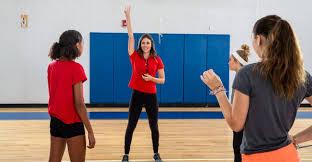Ensuring Safety: Preventing Injuries in Physical Education Classes
Stanley Bangani![]() Invalid date
4 minutes, 22 seconds
Invalid date
4 minutes, 22 seconds
626 views 3 Likes
Physical education is a crucial component of a well-rounded education, promoting not only physical fitness but also fostering teamwork, discipline, and overall well-being. However, with physical activity comes the risk of injuries. Ensuring the safety of students in PE classes is paramount to allowing them to reap the benefits of exercise without unnecessary risks. Let's delve into some essential strategies to prevent injuries and create a safer environment within physical education classes.
Professional Guidance and Supervision: One of the primary keys to preventing injuries in physical education classes is the presence of well-trained and attentive instructors. Educators should have a strong understanding of the activities being conducted, along with safety protocols. They should be capable of supervising students effectively, ensuring proper form and technique while guiding them through exercises.
Proper Warm-ups and Cool-downs: Often overlooked, warm-ups and cool-downs are crucial in injury prevention. A comprehensive warm-up prepares the body for physical activity by gradually increasing heart rate and circulation, thus reducing the risk of strains or sprains. Cool-downs, on the other hand, allow the body to return to its resting state, reducing muscle soreness and the risk of injury after physical activity.
Teaching Correct Technique: Educators must emphasize the importance of correct form and technique in various exercises. Incorrect posture or movement can lead to injuries. By educating students on the proper techniques and continuously correcting their form, instructors can significantly reduce the risk of injuries during physical activities.
Appropriate Equipment and Facilities: Ensuring that the equipment and facilities used in physical education classes are in good condition is imperative. Regular maintenance and inspection of equipment can prevent accidents caused by faulty or worn-out gear. Additionally, adequate space and well-maintained playing surfaces minimize the risk of slips, falls, or other accidents.
Personalized Approach and Accommodations: Every student is unique, and their physical capabilities and limitations vary. Instructors should be aware of individual differences and provide accommodations or modifications to activities based on students' needs. This could involve providing alternative exercises or adjusting the intensity or duration of an activity to ensure safety.
Safety Education: Educating students about safety practices and guidelines during physical activities is crucial. This can include teaching them about the importance of hydration, understanding their physical limits, and recognizing signs of fatigue or overexertion. Knowledge empowers students to make informed decisions regarding their physical well-being.
Supervision During Activities: Close supervision during activities, especially those involving high-intensity movements or equipment, is crucial. Instructors must maintain a watchful eye to immediately address any unsafe behavior or prevent potential accidents.
Incorporating Rest and Recovery Periods: Intense physical activities should be balanced with adequate rest and recovery periods. Allowing the body time to recuperate between exercises can prevent overuse injuries and exhaustion. Preventing injuries in physical education classes requires a multifaceted approach, encompassing knowledgeable instructors, safe environments, proper technique emphasis, and student education. By implementing these strategies, physical education classes can be not just physically beneficial but also safe and enjoyable for all students. Remember, safety should always be a priority in any physical activity, allowing students to thrive in a secure and supportive environment.
image source:https://blog.gophersport.com/7-strategies-for-classroom-management-in-physical-education/

